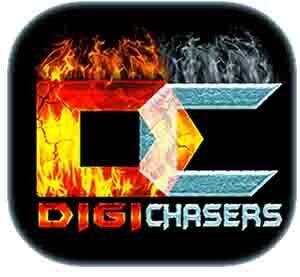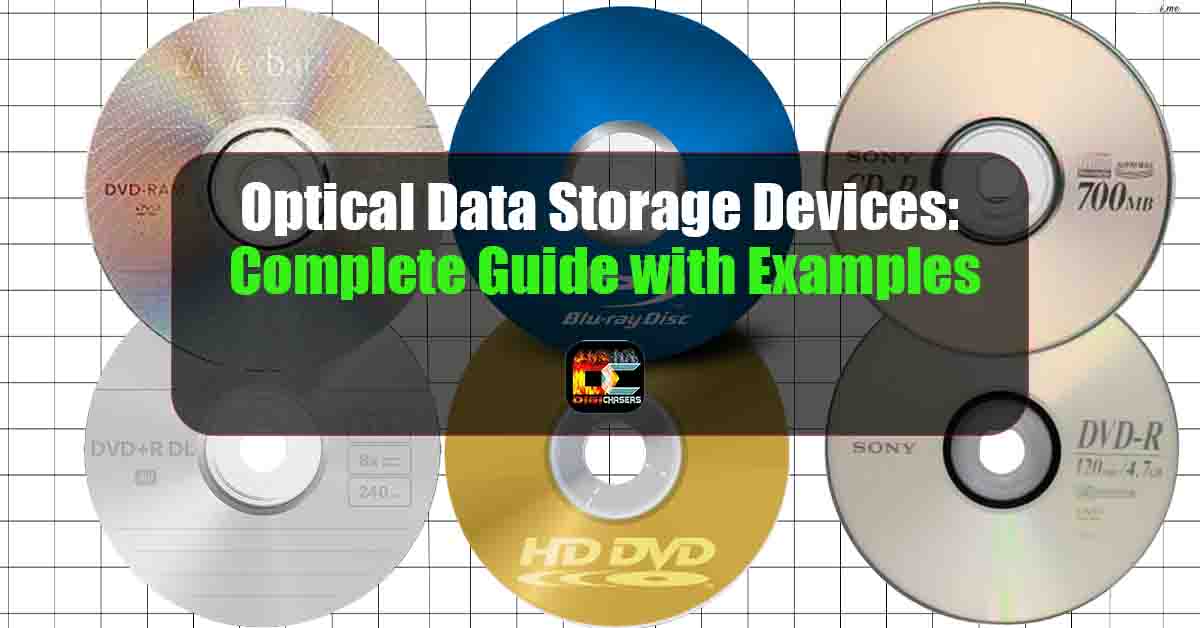People have been using optical devices since ancient times; even ancient Egyptians and Mesopotamians used devices based on light sources. But Egyptians and Mesopotamians use devices far from reminiscent of a modern optical device.
The first modern digital optical disc was launched at the end of the 20th century (1982). But widespread use of CD began in the late 90s. During that time, people chose between floppy disks and CD-disks. At that time, the winner was the optical device.
Today, the most widely known and used optical storage formats are CD, DVD, Blu Ray, HD DVD, DVD-RAM, DVD+R DL. And devices designed to process optical data – CD-ROM, DVD-ROM, Blu Ray-ROM, HD DVD-ROM.
What is Optical Data Storage Device?
IBM describes optical storage as “any storage method that uses a laser to store and retrieve data from optical media.”
The term “optical storage” refers to an optical storage system that allows the storage of information on an optically accessible medium. The data is stored by making marks in the form of a pattern which can be read back using the aid by light which is usually an arc made of laser beam that is precisely focused onto the spinning optical disk.
Types of Optical Storage
Below we will look at optical storage formats, their possibilities, and a bit of history.
What is CD?
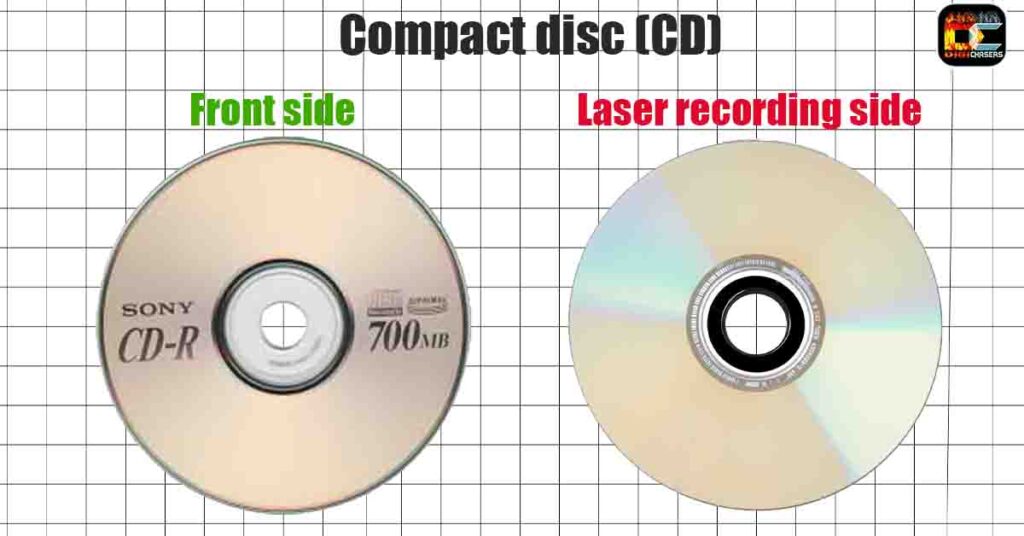
A compact disc (CD) is a digital optical disc storage format developed with Philips along with Sony to play and store recorded audio files digitally. In August 1982 the very first CD was made. It was released in October of 1982 and was branded Digital Audio Compact Disc.
The CD could record 700 MB (megabytes) of dates or, as was popular at times, 74 minutes of music (uncompressed stereo digital audio).
WORKS on CD-ROM, DVD-ROM, Blu-Ray ROM, HD-DVD ROM
What is DVD?
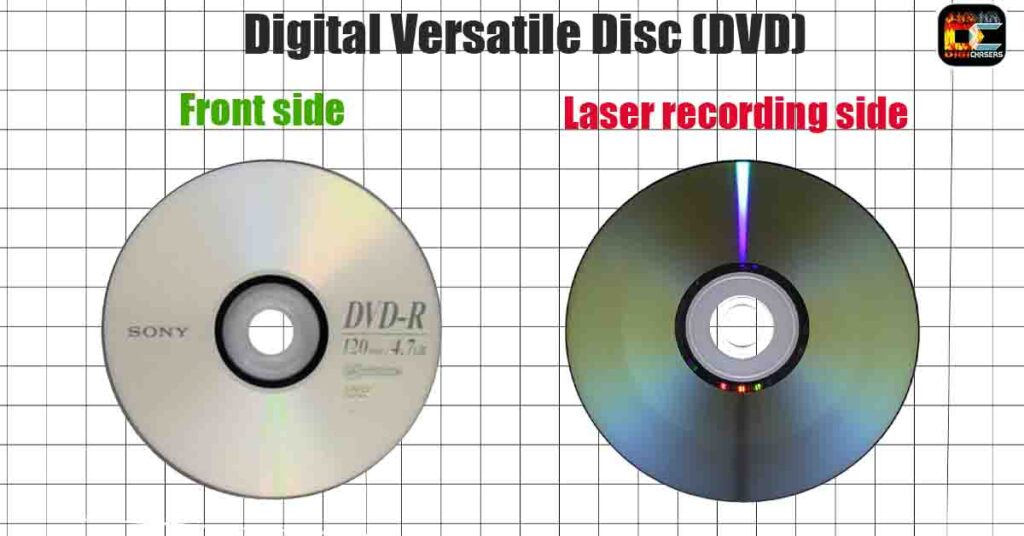
In 1996, a DVD (digital versatile disc) format was released in Japan significantly larger than the CD’s predecessor. The DVD format disk can record up to 4.7 GB (single-sided, single-layer – common) storage or up to 120 minutes of audio. The DVD format disc could hold up to 4 layers, thus expanding the available memory to 17.08 GB, although such discs were rarely found in the market.
It is worth mentioning that a simple CD-ROM could not read data from a DVD format disc. And DVD-ROM drives read both CDs and DVDs perfectly.
WORKS on DVD-ROM, Blu-Ray ROM, HD-DVD ROM
What is Blu Ray?

In 2003, a Blu-ray Disc was released also in Japan, which replaced DVDs in certain areas. The main difference is that Blu-ray technology uses a violet laser and regular DVD use is a red laser. A single-layer Blu-ray disc can store up to 25 GB of memory. You can find a 4 layer disc that can hold up to 128GB of memory in the market.
The Blu-Ray compact cannot be opened with a CD-ROM or DVD-ROM, no matter how unfortunate it is. Therefore, a Blu-Ray compact will require a device adapted for Blu-Ray compact discs. Games for the PS5 or Xbox X series are recorded on Blu-Ray discs.
WORKS on Blu-Ray ROM
What is HD DVD?
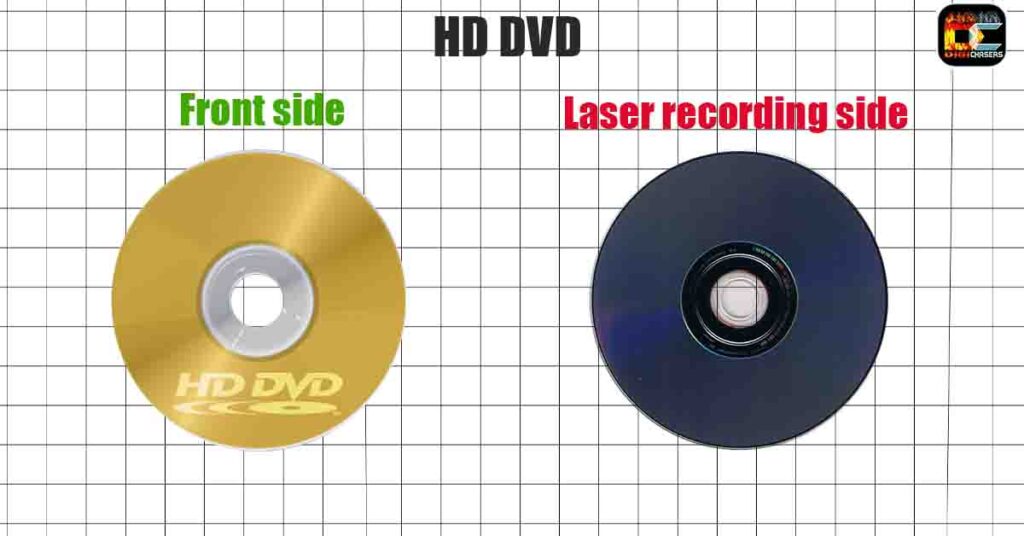
HD DVD was a significant competitor to Blu-Ray. However HD DVD was released in 2006 but has not established itself in the market. HD DVD used a blue laser, unlike CDs, DVDs – red or Blu-Ray – violet.
A single-layer HD DVD could hold up to 15 GB, and a dual-layer could hold up to 30 GB of data storage. It is even 10 GB smaller than the Blu-ray format. HD DVD discs cannot play on traditional DVD players.
The HD DVD format was created to accommodate high-quality video, but Blu-ray has surpassed it and HD DVD has finally failed to gain a foothold in the market.
Toshiba has since revealed that they had lost $986 million as a result of the format’s inability to perform.
The HD DVD format is dead because no one uses it anymore, and playing such a format can be a lot of a hassle. So officially, the HD DVD market has only been in use for only 2 years (from 2006 to 2008), so its legacy is very meager.
WORKS on HD-DVD ROM
What is DVD-RAM?
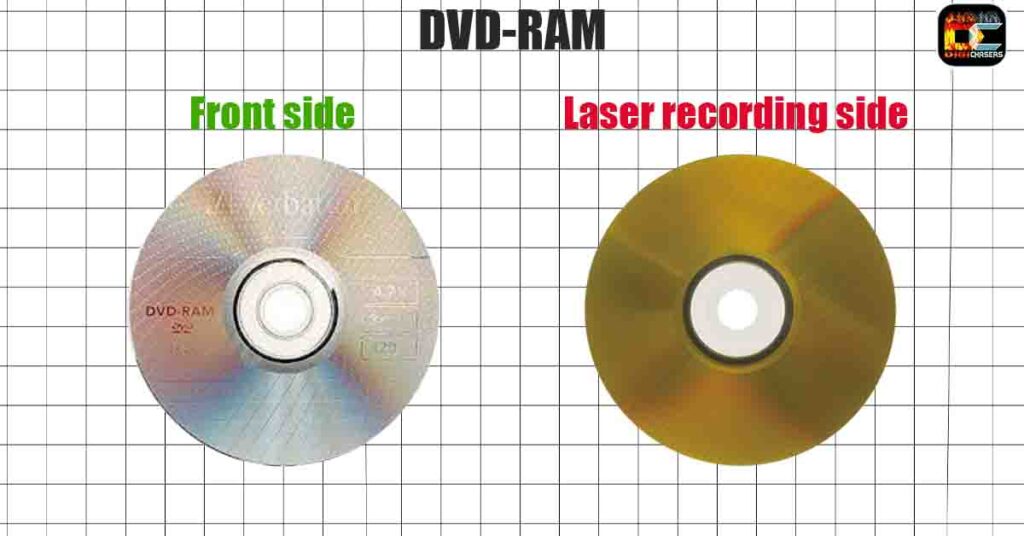
DVD-RAM is not a new technology and has been on the market since 1998. This technology has been very innovative in its time. Generally speaking, this DVD-RAM format could be used as USB Flash storage. I mean, it was possible to write and delete the files on the disk without any hassle. Like its brother DVD format, single layer DVD-RAM could hold up to 4.7 GB of memory.
See, DVDs and CDs usually have their data written onto one continuous spiral of pits and lands. Think of it as a very long list of information with little bits of code peppered in telling the drive where along with the list it’s reading. This structure works great for things like audio and video data, but it begins to fall apart when you want to store many smaller files.
The DVD-RAM was compact, which could be rewritten without overwriting the entire disc. For example, a compact would have to be rewritten entirely to rewrite a DVD-RW disc. A DVD-RAM disc is more reminiscent of an HDD or floppy disk because it operated in segments, even though it was an optical drive, so small dots are visible on the disc.
If DVD-RAM was such an innovative format, why wasn’t it established on the market?
The main reason it did not establish itself in the market is the price. DVD-RAM discs were also relatively slow, most of them could be written at 2x or 3x speed, and for example, a standard DVD could be written at x16 or x24 speeds. Also, its use was reality limited at the time, as media players had difficulty recognizing files written to them.
WORKS on DVD-ROM
What is DVD+R DL?
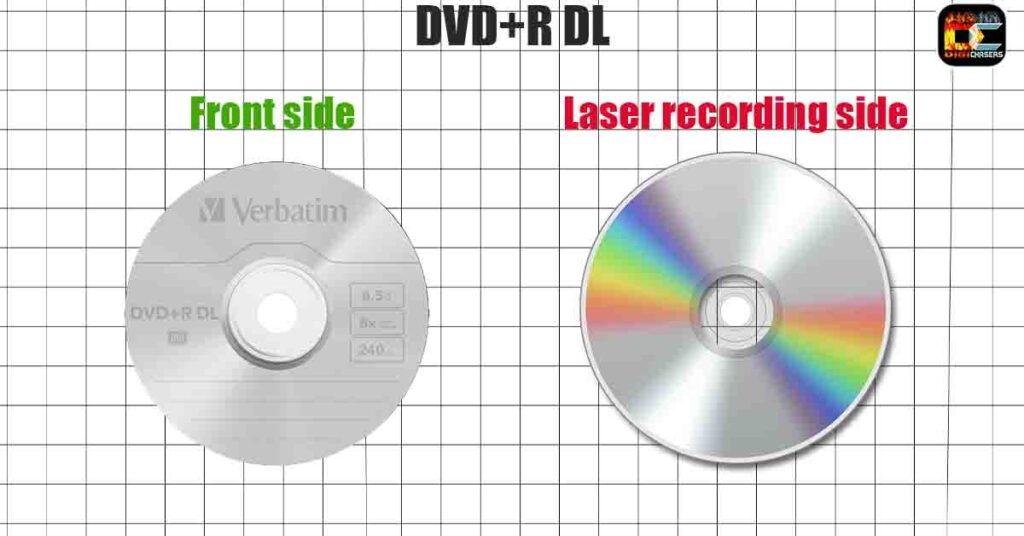
The DVD+R DL was released in 2004 but was twice as expensive as a regular DVD. The DVD-R DL was unique in that it had a dual-layer with a decal format of up to 8.5 GB of memory. But it was also twice as slow (x12) as his brother – DVD. This format was almost non-exclusive and had a challenging time adapting to the market. Although it is found in stores to this day.
WORKS on DVD-ROM
Author Recommended Reads:
- Magnetic Storage: Examples, types and little of the history.
- Difference Between SSD and HDD. Simple Answers With Pictures.
- What is PCIe NVMe SSD? Explained.
- 1080i vs 1080p PS4 Simple Answer.
Frequently Asked Questions
How do optical storage devices work?
For example, on CD, there is one single data track and that track goes from the center of the disc to the outside. The laser thats read the data is not following spiral; instead, disc is rotating, and laser is slowly moved to the outside of a disc
What is 3 examples of optical storage devices?
CDs, DVDs, Blu-ray are the most common formats for optical storage devices.
Optical data storage devices
Optical storage formats are CD, DVD, Blu Ray, HD DVD, DVD-RAM, DVD-R DL.
What are optical storage devices are most commonly known as?
The optical storage devices are now commonly known as external storage devices, which are relatively cheap and convenient for various uses.
If you have not found an answer feel free to write in the comments, and then we will try to help you as soon as possible.
